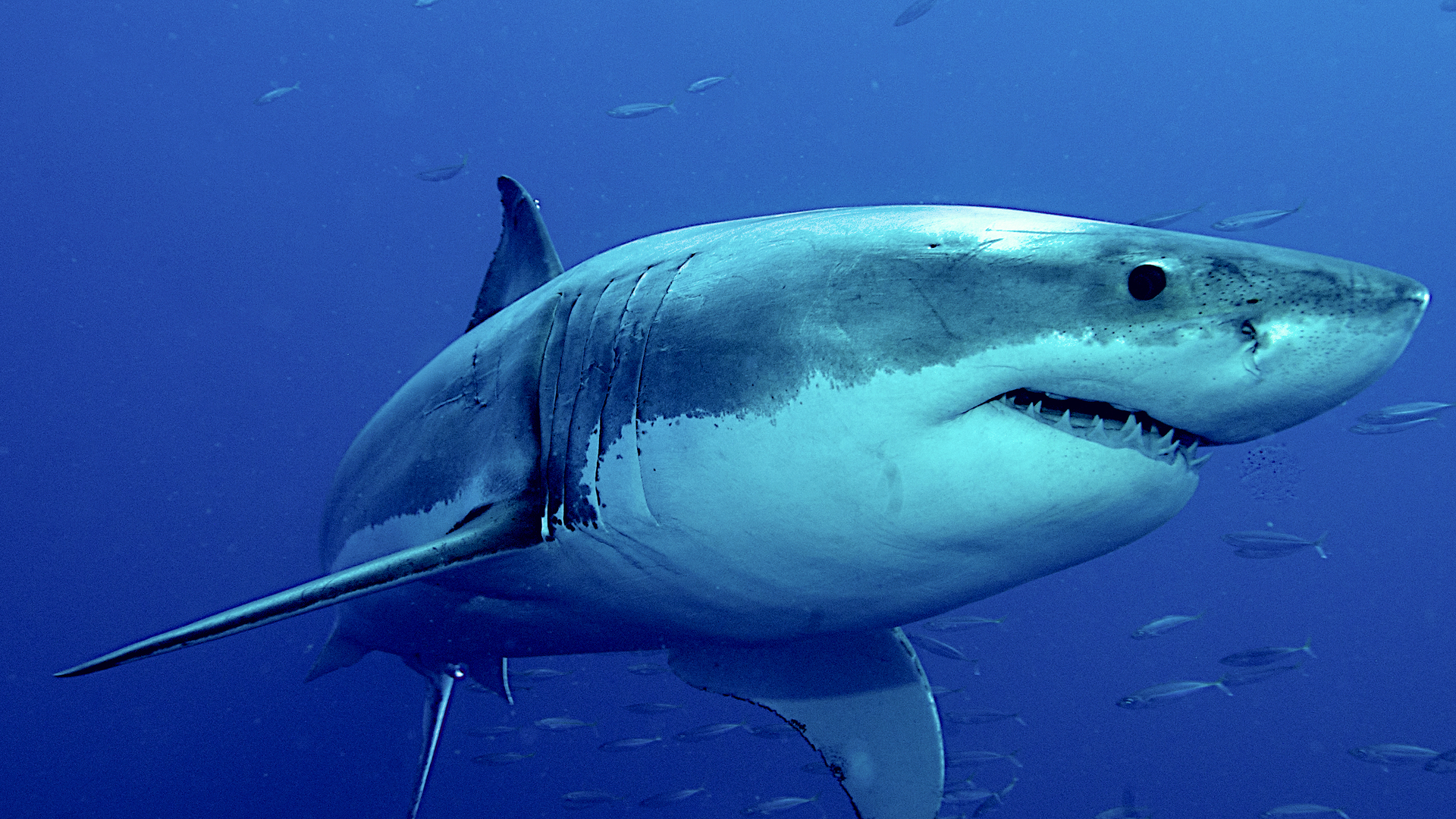- Home
- Conservancy
- Great white shark
WHERE TO SEE Great white shark
Description
Anatomy and appearance Great white shark's skeleton The great white shark has a robust, large, conical snout. The upper and lower lobes on the tail fin are approximately the same size which is similar to some mackerel sharks. A great white displays countershading, by having a white underside and a grey dorsal area (sometimes in a brown or blue shade) that gives an overall mottled appearance. The coloration makes it difficult for prey to spot the shark because it breaks up the shark's outline when seen from the side. From above, the darker shade blends with the sea and from below it exposes a minimal silhouette against the sunlight. Great white sharks, like many other sharks, have rows of serrated teeth behind the main ones, ready to replace any that break off. When the shark bites, it shakes its head side-to-side, helping the teeth saw off large chunks of flesh. Size Specimen caught off Cuba in 1945 which was allegedly 6.4 m (21 ft) long and weighed an estimated 3,175 kg (7,000 lb). Later studies proved this specimen to be of average maximum size, at around 4.9 m (16 ft) in length. In great white sharks, sexual dimorphism is present, females are generally larger than males. Male great whites on average measure 3.35
Fun Facts
Adaptations Photo of shark swimming at water surface A great white shark swimming Great white sharks, like all other sharks, have an extra sense given by the ampullae of Lorenzini which enables them to detect the electromagnetic field emitted by the movement of living animals. Great whites are so sensitive they can detect variations of half a billionth of a volt. At close range, this allows the shark to locate even immobile animals by detecting their heartbeat. Most fish have a less-developed but similar sense using their body's lateral line. Great white shark biting into the fish head teaser bait next to a cage in False Bay, South Africa To more successfully hunt fast and agile prey such as sea lions, the great white has adapted to maintain a body temperature warmer than the surrounding water. One of these adaptations is a "rete mirabile" (Latin for "wonderful net"). This close web-like structure of veins and arteries, located along each lateral side of the shark, conserves heat by warming the cooler arterial blood with the venous blood that has been warmed by the working muscles. This keeps certain parts of the body (particularly the stomach) at temperatures up to 14
